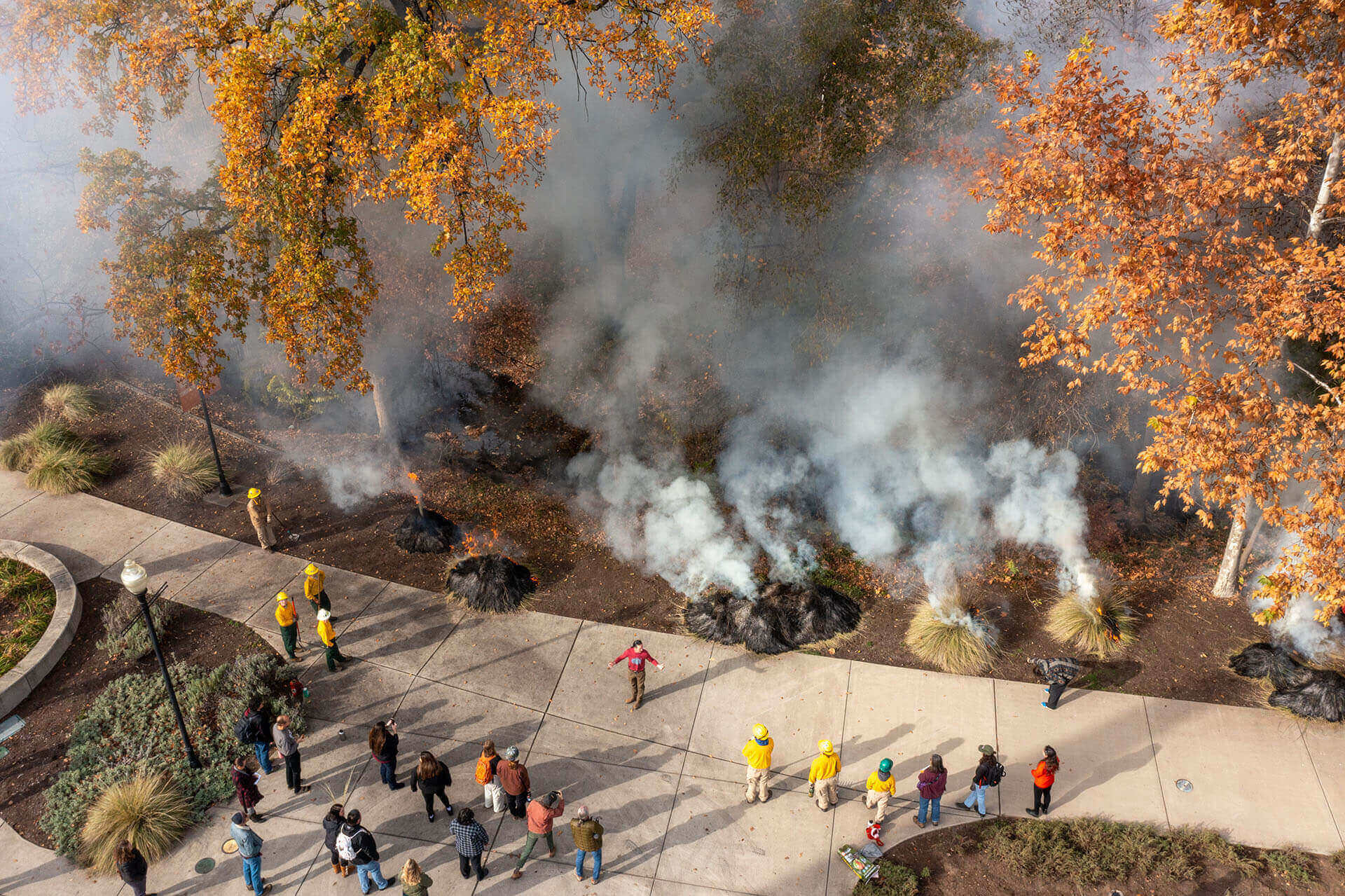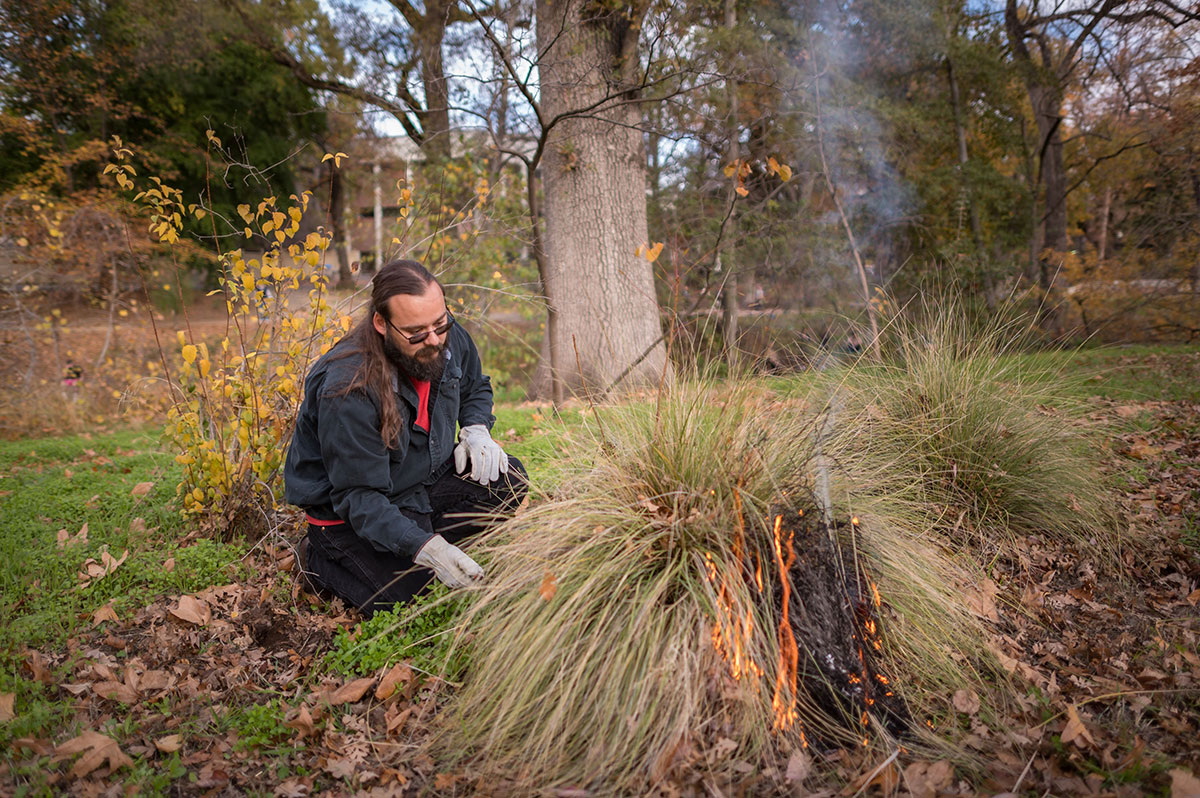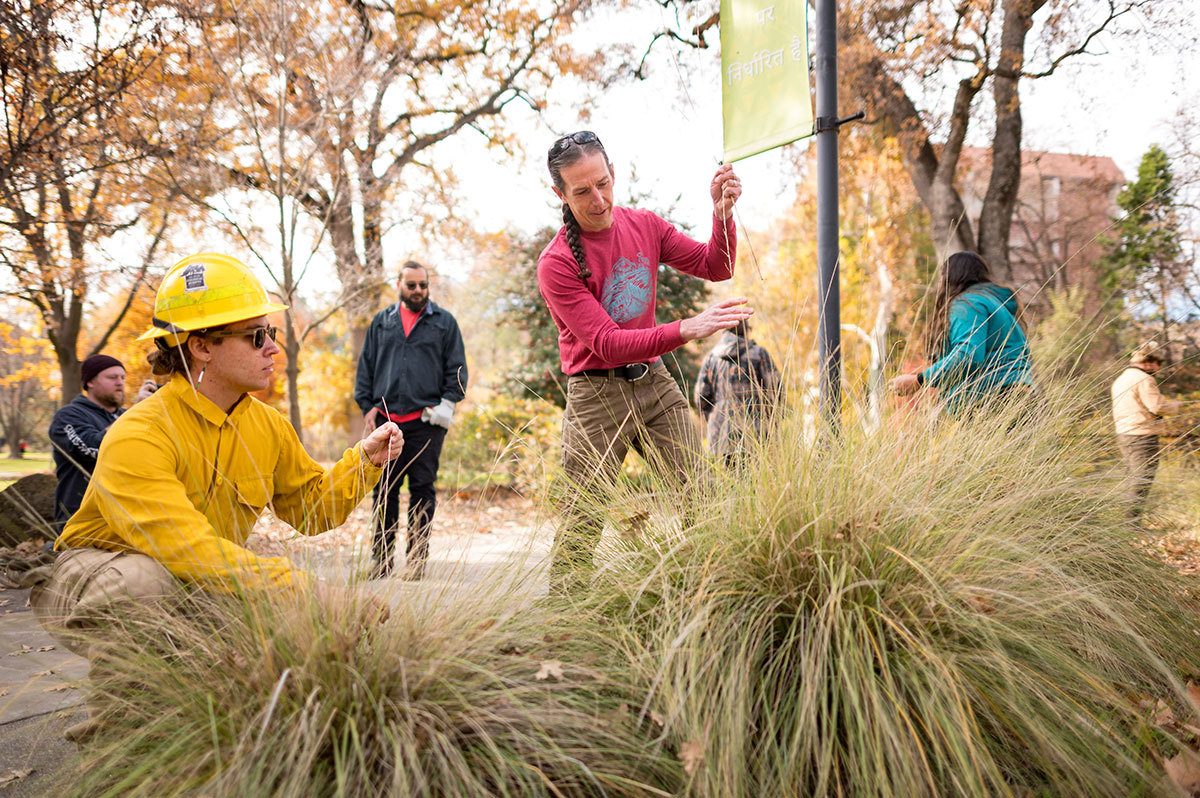Mechoopda Tribe and Big Chico Creek Ecological Reserve Partner to Conduct Cultural Burn on Chico State Campus

Passersby were eager to stop and watch the cultural burn take place on campus. One class from Holt Hall relocated to Alumni Glen to sit along the bank of Big Chico Creek and watch the gentle fire unfold. (Matt Bates / University Photographer)
Collaboration Makes Mechoopda One of First Tribes to Utilize New Legislation to Carry Out Burn on a Campus Within California State University System
The Mechoopda Tribe, in collaboration with the Chico State Office of Tribal Relations, Big Chico Creek Ecological Reserves (BCCER), and Professor Don Hankins, conducted a cultural burn on the Chico State campus Monday to return good fire to its ancestral lands, and in doing so, is believed to have become the first tribe to utilize new legislation to carry out a cultural burn on a campus within the California State University.
The burn focused on clumps of deergrass along the bank of Big Chico Creek between the Tribal Relations Office and the site of the new Behavioral and Social Sciences Building. It represents the first time that cultural fire has returned to the site, where the Mechoopda village “Bahapki” once stood, since the Tribe was removed more than a century ago.
“It feels good to return wénnèn sá (good fire) along Ótakim Séwi (Big Chico Creek) where the Mechoopda village of Bahapki once stood. Returning wénnèn sá to the Chico State campus has been a project I and others have been wishing to accomplish for a while,” said He-Lo Ramirez, Mechoopda’s environmental director. “I hope this small cultural burn targeting deergrass is the first step of many in the future, which I hope may grow to include cultural burning of sedges, redbud, fields of native geophytes and other native plants of eco-cultural importance.”

The burn was carried out by He-Lo; Hankins, a cultural fire practitioner and professor of geography and planning; and staff and students of the Big Chico Creek Ecological Reserve (BCCER). He-Lo (Biology, ’19; Credential, ’20; MS, Wildland Management, ’22) lit off the first clumps, returning a practice of his ancestors to their former land and to the campus where he earned both of his degrees.
Fire plays a key ecological role in California, but its absence for well over a century has become a contributing factor in the accumulation of vegetation that leads to extreme fire behavior during wildfires. Historically these fuels were reduced by regular intervals of fire, resulting from lightning ignitions and Indigenous burning.
The BCCER has been using prescribed burns for more than a decade as a way of reducing fire danger and teaching students about resilient ecosystems. The importance of “good fire” as both an educational and wildfire mitigation tool is increasingly in the spotlight, organizers say.
This cultural burn not only revitalizes cultural resources and controls invasive plants—it is also an opportunity to exchange knowledge and inspire future generations, said Hankins, a Plains Miwok traditional cultural practitioner and an internationally renowned scholar in the field of pyrogeography.
“It’s powerful today to see fire being put back on this land. We are literally passing the torch to another generation of cultural burners,” said Hankins. “In doing so, we are also building a broader educational conversation around fire, to see how it affects this species in the weeks to come and year after year—to really see what fire’s role is.”

The deergrass (Muhlenbergia rigens) that was burned on the Chico State campus is known in Maidu as Ósoko sáwi, and the plant is still valued by California Native basketmakers. Pyromanagement of cultural burning makes the stems return stronger and to serve as better basket material, which is one of the many reasons it was a practice utilized for centuries. Hankins, while showcasing a basket start made of deergrass, took time to explain with students and members of the public the importance of deergrass and the cultural objectives of the burn.
The recently adopted Senate Bill 332, introduced by Senator Bill Dodd (Business Administration, ’78), and Assembly Bill 642 define and codify cultural burning and practitioners from California Native American Tribes and organizations. Both bills passed in 2021. This year, Dodd also introduced Senate Bill 310, which will revise the definitions of cultural burn and cultural fire practitioner, and streamline federal agreements with federally recognized California Native American tribes in support of tribal sovereignty with respect to cultural burns.
“Native Americans have been conducting controlled burns with great success for thousands of years,” Dodd said during his introduction of the most recent legislation. “My bill will help tribes participate in this time-tested form of wildfire prevention on tribal lands. It is an important piece of the puzzle for keep California safe.”


